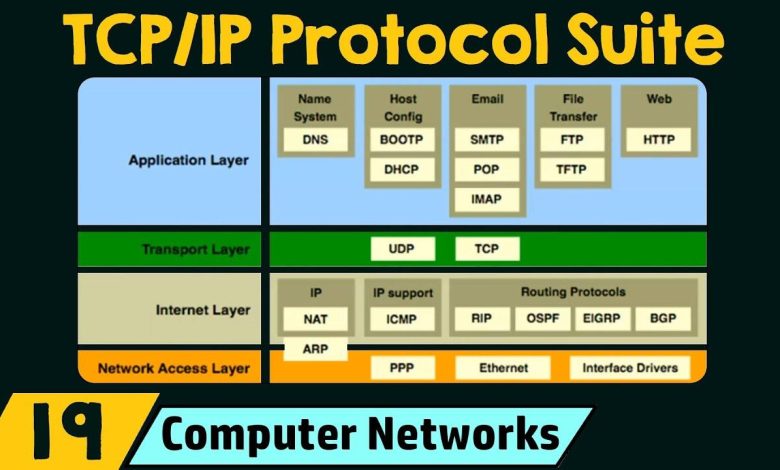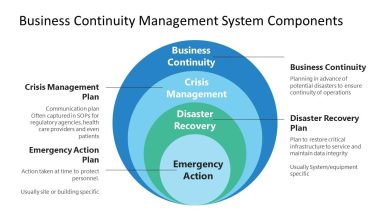Introduction to TCP/IP Protocols: How Data Travels

“`html
Introduction to TCP/IP Protocols: How Data Travels Across the Internet
Ever wonder how a simple click on a website link can instantly bring you information from a server possibly located thousands of miles away? The magic behind this seamless data exchange lies in the Transmission Control Protocol/Internet Protocol (TCP/IP),the fundamental dialog suite that powers the internet. This article will serve as your thorough guide to understanding TCP/IP, explaining its components, and illustrating how data packets journey across the vast network of networks we call the internet.
What is TCP/IP?
TCP/IP is a conceptual model and set of communications protocols that defines how computers should be connected to the network and how data should be transmitted between them. Think of it as the worldwide language of the internet, ensuring that different devices and networks can communicate effectively. The term “TCP/IP” actually represents two separate protocols that work together:
- Transmission Control Protocol (TCP): Responsible for reliable, ordered, and error-checked delivery of a stream of data between applications running on different hosts.
- internet Protocol (IP): Handles the logical addressing and routing of data packets across networks, enabling them to reach their intended destination.
While often discussed together as TCP/IP, these protocols have distinct roles within a larger framework, known as the TCP/IP model or suite.
The TCP/IP Model: A Layered Architecture
similar to a well-designed building with multiple levels,the TCP/IP model operates on a layered architecture. Each layer performs a specific function, abstracting away lower-level details and providing standardized building blocks for applications and services. The four layers of the TCP/IP model are:
1. Application Layer
This is the layer your applications interact with directly. It includes protocols that provide user services or applications to access the network. Common examples are:
- HTTP (Hypertext Transfer Protocol): Used for web browsing.
- FTP (File transfer Protocol): For transferring files between computers.
- SMTP (Simple Mail Transfer Protocol): Enables sending and receiving emails.
- DNS (Domain Name System): Translates human-readable domain names (like google.com) into IP addresses.
2. transport Layer
This layer is responsible for end-to-end communication between applications. It provides two primary protocols:
- TCP (Transmission Control Protocol): Offers a connection-oriented,reliable service that guarantees data delivery in the correct order,with error checking.
- UDP (User Datagram Protocol): Provides a connectionless, unreliable service without any guarantees of data delivery or sequencing. UDP is faster but lacks the reliability checks of TCP.
The transport layer segments large amounts of data into smaller packets, called segments in TCP and datagrams in UDP. This layer also manages flow control and error control, ensuring data flow is efficient and reliable.
3. Internet layer
This layer is where IP comes into play.It’s responsible for addressing and routing data packets across networks. Each device on the network has a unique IP address, allowing packets to be directed correctly.
- IP (Internet Protocol): The core protocol of this layer, handling logical addressing and routing.
- ICMP (Internet Control Message Protocol): Used for diagnostic and control purposes, such as reporting errors.
- ARP (Address Resolution Protocol): Maps IP addresses to physical MAC addresses.
The internet layer encapsulates segments from the transport layer into packets, and routes these packets across the network to their destination. It also handles fragmentation and reassembly of packets.
4. Network Access Layer (Link Layer)
the lowest layer, handles the complexities of interacting with the underlying network hardware.This layer is responsible for transmitting data over a physical network link. Technologies such as Ethernet, Wi-Fi, and more, reside here. It’s concerned with getting data across one particular link or network. It uses protocols like Ethernet and PPP (Point-to-Point protocol) for data transmission over the physical medium.
The network access layer maps network addresses to physical addresses and transmits data as frames. It also manages the way data is physically transmitted over the network medium.
How Data Travels: A Step-by-Step Journey
Let’s illustrate the process of how data travels across the internet, using a simple scenario: You’re sending an email to a friend.
- Application Layer: You compose your email in your email client (e.g., Outlook, Gmail). The email client uses SMTP (part of the application layer) to prepare the email for transmission.
- Transport Layer: SMTP sends your email to the transport layer, where TCP takes over. The email is segmented into smaller data packets. TCP adds sequence numbers to each segment, ensuring they can be reassembled in the correct order at the destination. Also, the process starts to create a reliable connection with the server.
- internet Layer: TCP passes each segment to the internet layer, where IP takes charge.IP encapsulates each TCP segment into an IP packet. Each packet gets a header containing the source and destination IP addresses, and other information needed for routing.
- Network Access Layer: The IP packets are then passed down to the network access layer,where they are placed into frames. This layer adds information necessary for transmission over the specific physical network, such as Ethernet headers and trailers if the network is an Ethernet network. These frames are transmitted over the physical medium (e.g., cables, fiber optics, wireless signals) to the first router in the path.
- Routing: Routers, which operate at the internet layer, receive the frames, examine the destination IP addresses, and consult their routing tables to determine the best path to forward each packet. Each router along the path performs this process, making forwarding decisions based on the destination IP address.This is how packets are sequentially moved from your local network, through multiple intermediate networks, to the destination network.
- Arrival at Destination: As packets arrive at the destination network, the process is reversed. The network access layer strips off the frame headers and trailers. The internet layer assembles the packets, removes the IP headers, and passes the resulting data to the transport layer.
- Transport Layer (Destination): At the recipient’s end, TCP reassembles the packets in the correct order (using the sequence numbers). It also performs error checking to ensure that all packets have arrived without corruption.
- Application Layer (Destination): the assembled data is passed up to the application layer, where the recipient’s email server receives it. The email server then delivers your message to your friend’s inbox.
IP Addressing and Routing: Navigating the Network
IP addressing and routing are critical aspects of TCP/IP, enabling data to find its way across the complex network of networks that makes up the internet.
IP Addresses: Your Digital Address
Each device connected to a network using TCP/IP has a unique identifier called an IP address. There are two main versions of IP addresses in use:
- IPv4 (IP version 4): The most common type, using 32-bit addresses typically represented in four-part decimal format (e.g., 192.168.1.1).
- IPv6 (IP version 6): A newer version with 128-bit addresses, providing a vast number of possible addresses to accommodate the growing internet. IPv6 addresses are represented in eight groups of four hexadecimal digits (e.g.,20



